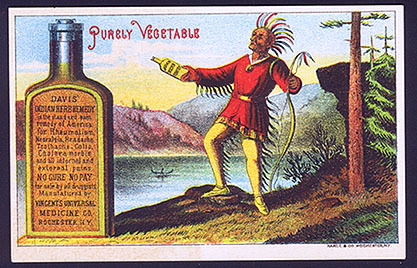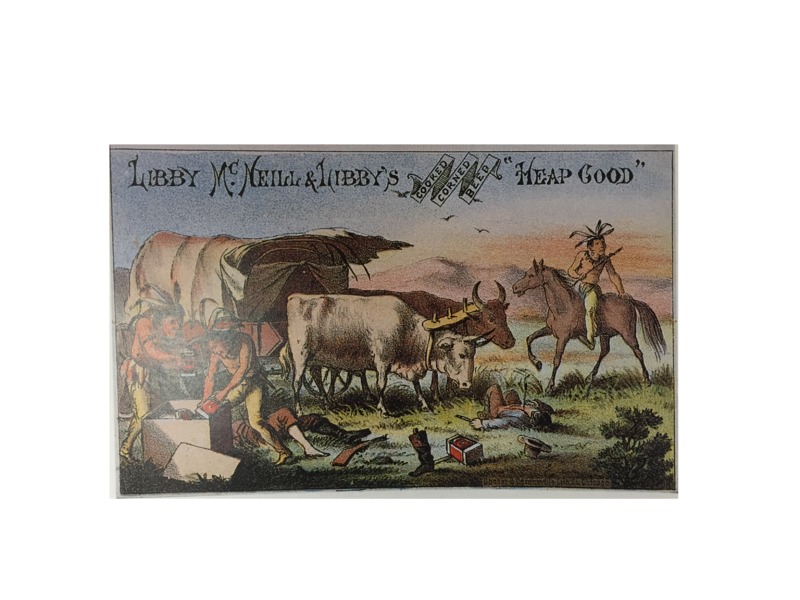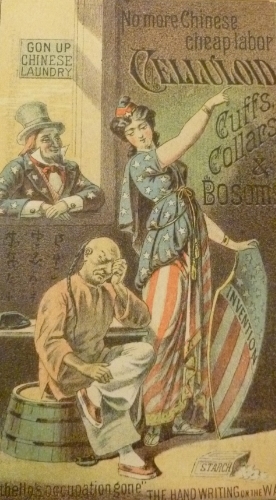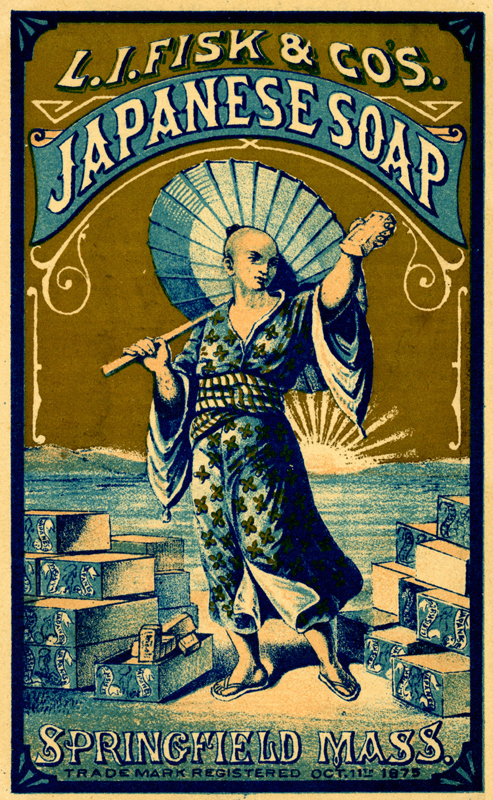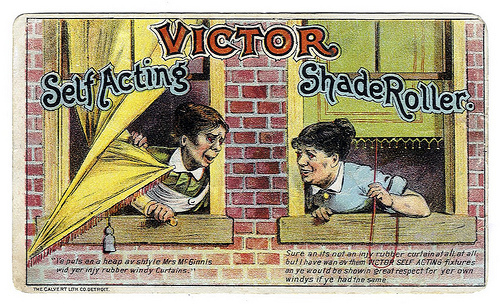4. Otherness
The American Indian was almost as common a source of imagery as were blacks. Yet Ironically while indians were usually depicted with great dignity in advertising, the treatment they actually received from the government and other institutions was even worse that that to which blacks were subjected.
Native American were marketed on the assumption that the "red man", in his unique communion with nature, possessed knowledge of its curative powers on the other hand in many other ads like the Libby McNeil add the Native American seems delighted to encounter the white man's goods because they are far more sophisticated than something he could produce.
In response to the need for cheap manual labor in the Far West, Chinese immigration to the US increased at an extraordinary rate between 1850 and 1880. In response to what was widely perceived as the economic and cultural threat of this alien population, vicious riots accompanied the emergence of trade cards like the one to the left . On this card, Columbia literally indicates the handwriting on the wall: "with the advent of Celluloid collars and cuffs, cheap Chinese labor could be shown the door"(jay 74)
The flow of Chinese Immigration may have stopped with the Chinese Exclusion Act of 1882, but already by this point 25% of the working population of California was Chinese( jay 72). Fearing the growth of the other, many Americans spread and conveyed these sentiments through advertisements.
Conversely, the Japanese were depicted completely differently than the Chinese. Where true Japanese culture was represented, it was as the essence of oriental exoticism and refinement, and was thus a vehicle for the marketing of perfumed soaps and other luxury articles.
Despite the enormous influx of European immigrants along with the influx of chinese immigrants in the last twenty years of the century references to specific groups on trade cards were fe, this undoubtedly due in large part to the fact that such immigrants made up a considerable part of the consumers that advertisers were trying to attract. the Irish Maid or cook shows ups occasionally as generally a good-natured parody.
The Jew who was so frequently the runt of butter caricature in European popular illustration, was treated much better in America. There were few satires of the Jewish man, since so many of the major lithographic companies were in New York and were owned and operated by Jewish immigrants from Europe, the few example that do exist were usually printed in other places
